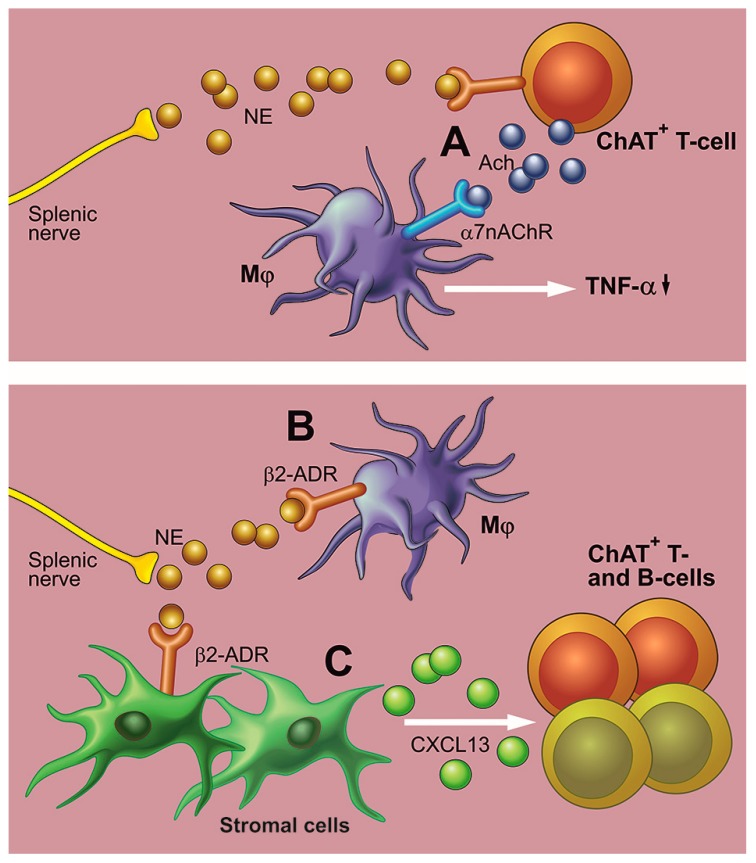Figure 2.
Mechanisms via which stimulation of the splenic nerve controls inflammation. (A) Stimulation of the splenic nerve causes the release of norepinephrine (NE), which binds to receptors on the choline acetyltransferase (ChAT)+ T-cells. These cells produce acetylcholine (ACh), which reduces the production of inflammatory cytokines such as tumor necrosis factor (TNF)-α by binding to the α7 nicotinic acetylcholine receptor (α7nAChR) of macrophages [68]. (B) The released NE directly binds to β2-adrenergic (β2-ADR) on macrophages (or other target cells). (C) Upon activation by NE, splenic stromal cells produce chemokines, such as chemokine (C-X-C motif) ligand (CXCL) 13, which control the distribution of ChAT+ lymphocytes [72]. Mϕ—macrophage.

